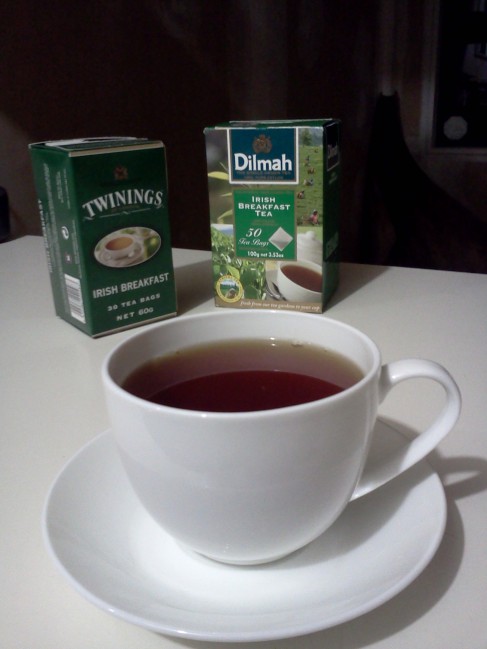A very fine lass I regularly drink tea with has the unfortunate condition, she is somewhat intolerant of the delights that megacorp Fonterra produce. During our latest tea drinking session the idea was floated to find a compatible tea that works well with a good soy milk, being a fearless individual over the age of 18 years I took up this challange.
From what I can recall from the conversation, soy milk selection comes with many pitfalls; there is a scale from delightful warm nutty flavours to what was simply described as ‘Green’. What is Green flavour you ask? It’s that dusty mildew smell of black-green mold, the taste you would expect from licking the dashboard of a vintage car left sitting in the shade for a couple of decades… the common odor of any flat during the deep misty winters in the swamp called Hamilton. So rather than play Russian roulette in the supermarket I called on the milk free experts and was put onto Pams Soy milk, which as I was informed, is the most student friendly on price and by far leader of the pack when it comes to not greenlyness.
Once I had obtained my carton of milk substitute, I cracked the top and made my first cuppa… the first of many that I either suffered through or delighted in. Below are my top and bottom selections.
The best:
NZ breakfast: Good balance of flavours, unique tea flavours stand out above the soy with the distinctive character it has well identifiable without masking the soy, worthy of mention too was the NZ earl grey which too stayed true to its intended flavour.
Twinings Lady Grey tea: Stellar, the flavour is indistinguishable from a milked tea. I suspect that there is an interaction with something in the tea, much like the English breakfast cancelling out the soy, but in this case the citrus peel in the lady grey masks the bitterness.
Dilmah Exceptional Lively lime and orange: at first it was a bit dish watery (lemony with a thick gloopy flavour afterwards) but as it settled this took on a lovely ginger note and became a very pleasant experience best described as drinking a Gingernut biscuit.
The Worst.
Choysa (Square): Fish. Mixing soy milk with Choysa tea produces fishy flavour. It’s as though somebody soaked a cod head overnight in the kettle and filled the teabag with tuna flakes. Still, it is drinkable, however combined with the thicker texture imparted by the soy milk, I’d sooner drink the brine from a fishmongers chopping board.
Twinings English Breakfast: Loses the nutty soy finish, however… then releases a strong taste of chloride in the finish which appears as the tea cools for about 10 minutes before slowly dissipating. Otherwise it was sub-average if not a bit watery towards the end.
Dilmah Irish Breakfast: I had high hopes for this particular blend as it was a stronger brew and thus I was hopeful the tea would come out above the soy unfortunately, it was reminiscent of the Choysa… but better than in the sense the floral and fruity notes were distinguishable, followed by a hint of fishiness.
Honourable mention for resurrectional properties.
Dilmah Exceptional Earl grey tea: When first tried this particular tea I found the bergamot so overpowering and destructive that it was launched to the back of the cupboard in the hopes it would never see the light of day again. I resurrected this to see if the soy would transmute this vile beverage into a drinkable form…The most destructive part of this tea is the dry sour flavour left in the mouth on the finish. The nuttiness of the soy, however, counteracts this and makes the tea palatable, I daresay… enjoyable.
A final note…
when it comes to soy milk in tea I found it best to brew strong, and then leave it to develop for a few moments as this helps to let the flavour evolve into its final form. The flavour outcome is also difficult to predict by quality of leaf or intended flavour, as demonstrated by the fish Choysa, but it can have unexpected pleasures, so experiment first.


